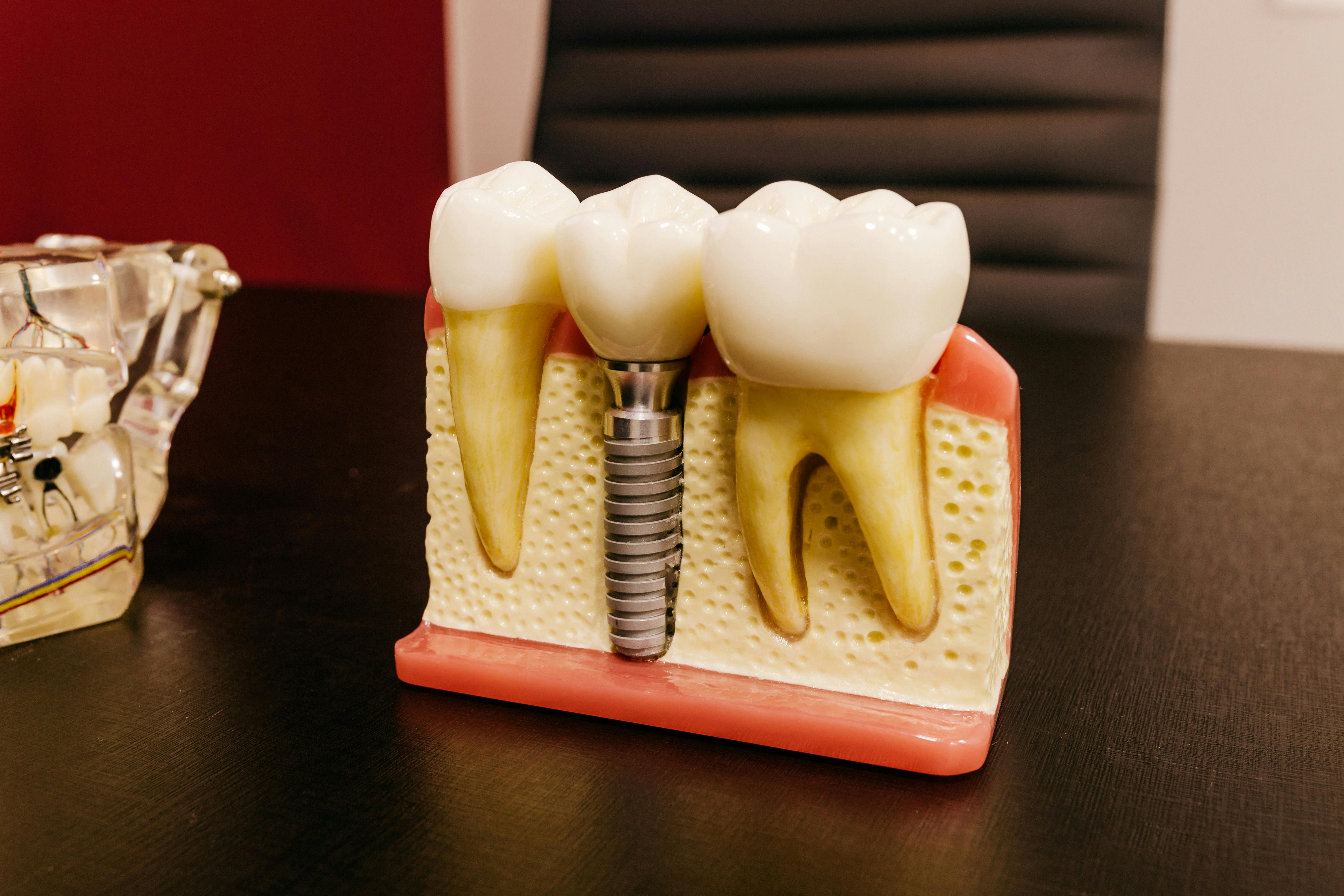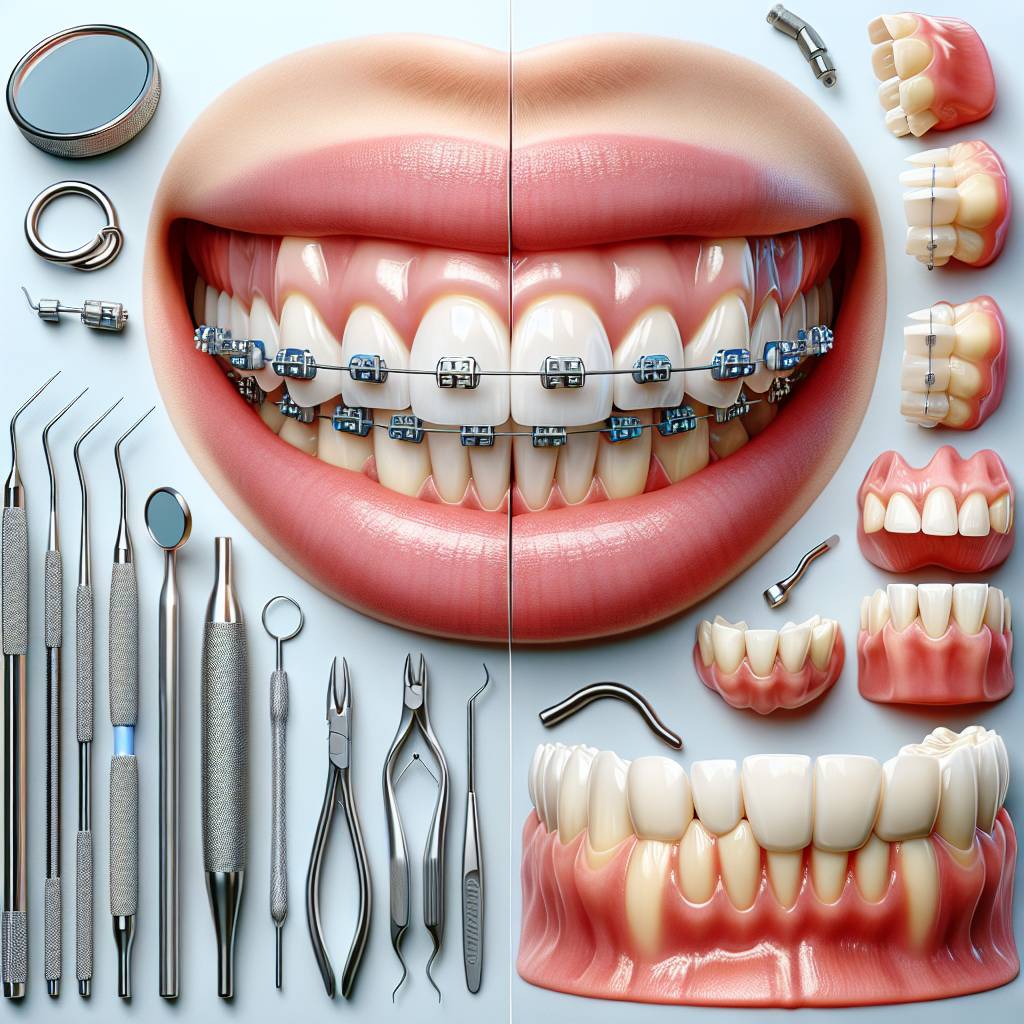Having gaps between your teeth can be a source of embarrassment and may make you feel self-conscious about your smile. Fortunately, there are a number of treatments available to close gaps between teeth. Depending on the size and location of the gap, your dentist may recommend one or more of the following treatments to help fix the problem: braces, veneers, bonding, or crowns. With these options, you can have a beautiful smile in no time.The best way to fix gaps between teeth is to visit an orthodontist. An orthodontist can evaluate your teeth and recommend the best treatment for closing the gap. Depending on the severity of the gap, treatment may include braces, which involve wearing braces on your teeth for a period of time in order to move them into the correct position. In some cases, a type of resin bonding may be used to close the gap between teeth. This involves applying a resin material directly onto the surface of the teeth in order to fill in any gaps or spaces. Your orthodontist will be able to determine which treatment option is right for you.
Reasons for Gaps in Teeth
Gaps in teeth, also known as diastema, is a common dental condition that affects many people. There are a number of reasons why gaps may form between the teeth. The most common reasons include genetics, poor oral hygiene, and misaligned teeth.
Genetics can play a role in the formation of gaps in teeth. Some people are born with large spaces between their teeth due to their genetic makeup. This is especially true for individuals who have a family history of diastema.
Poor oral hygiene can also lead to gaps forming between the teeth. If bacteria and plaque build up around the gums and teeth, it can lead to inflammation and bone loss. As bone is lost, gaps may form between the teeth as they move away from each other due to the lack of support from the bone.
Misaligned teeth can also be a cause of gaps forming between them. When teeth are crooked or crowded together, small spaces may form between them as they shift into different positions. This type of gap usually requires orthodontic treatment such as braces or retainers to correct it.
Gaps in teeth are not always cause for concern; however, if they become too large or if they are causing discomfort or difficulty with eating and speaking, it is important to consult with a dentist for treatment options. Treatment may include braces, retainers, dental bonding, or tooth reshaping depending on the severity and cause of the gap.
Different Methods for Closing Gaps Between Teeth
Having gaps between your teeth can be aesthetically displeasing and can also make it difficult to properly clean your teeth. Fortunately, there are several different methods for closing gaps between teeth. These include braces, dental bonding, veneers, and crowns.
Braces
Braces are the most common method for closing gaps between teeth. Braces involve brackets being fitted to the teeth and connected with a wire. Over time, the wire is tightened so that the teeth are gradually pulled together to close the gap. Depending on the severity of the gap, this may take anywhere from six months to two years or more.
Dental Bonding
Dental bonding is a less invasive alternative to braces for closing gaps between teeth. This involves a tooth-colored resin being applied to the surface of the tooth and then hardened with a special light. This material can be shaped and molded in order to close gaps between teeth by filling in any empty spaces and creating a more even surface.
Veneers
Veneers are another option for closing gaps between teeth and involve custom-made shells crafted from porcelain or composite resin that are bonded onto the front surfaces of your natural teeth. Veneers can be used to reshape, whiten, or close gaps between your natural teeth. They also require minimal preparation of your existing tooth structure and offer an instant transformation with minimal discomfort or downtime.
Crowns
Crowns are also an option for closing gaps between teeth but they require more extensive preparation than veneers do. A crown is placed over an existing tooth in order to restore its shape, size, strength, or appearance as well as close any gaps that may exist in between them . Crowns are made from porcelain or other materials such as metal alloys which can be matched closely with your natural tooth color for a more seamless look.
Pros of Braces for Closing Gaps
Braces can be a great option for people who want to close the gaps between their teeth. With braces, the gap between teeth is gradually closed over time by applying gentle pressure to move the teeth closer together. This method is very effective and can be used to close even large gaps between teeth. Another advantage of braces is that they are adjustable, so if the gap doesn’t close as quickly as desired or if there is any discomfort, adjustments can be made to make sure that the process goes smoothly and comfortably.
In addition, braces provide a great aesthetic result because they are designed to make sure that all teeth line up perfectly when the gap is closed. This means that after treatment, your smile will look naturally beautiful and even. Orthodontic treatment with braces also strengthens the jawbone and helps prevent further tooth decay since it puts more pressure on all of your teeth which encourages them to stay healthy and strong.
Cons of Braces for Closing Gaps
One of the most obvious disadvantages of using braces for closing gaps is that it can be quite expensive. Depending on the size of the gap and how long treatment takes, it could cost several thousand dollars just for orthodontic treatment alone. There may also be additional costs associated with getting x-rays taken or other necessary dental procedures before and during treatment.
Another disadvantage of using braces for closing gaps is that it requires patience as it can take several months or even a year in some cases before noticeable results are seen. In addition, wearing braces can be uncomfortable at times as they put pressure on your mouth which may cause pain or discomfort in certain areas. It is also important to keep in mind that wearing braces makes it difficult to brush your teeth properly since you need to maneuver around them when brushing so there is an increased risk of cavities and other dental issues while wearing them.
Cost of Braces to Fix Gap Between Teeth
The cost of braces to fix a gap between your teeth will depend on several factors, including the severity and complexity of the gap, your dentist’s fees, and the type of treatment you choose. Generally speaking, braces can cost anywhere from $2,000 to $7,000, depending on your specific needs. Invisalign aligners can be more expensive than traditional metal braces due to their custom-made nature. Your dentist may also recommend additional treatments such as tooth whitening or bonding in order to improve the aesthetics of your smile after the gap is closed.
Your dentist will discuss all the available treatment options with you in order to determine which would be best for your particular situation. If you are considering braces for closing a gap between your teeth, it is important to keep in mind that orthodontic treatment is an investment in your long-term oral health. Braces can correct misalignments that can lead to problems such as gum disease and tooth decay. The cost of braces is a worthwhile expense that can make a positive difference in both the look and function of your smile.

Options for Closing Gaps Without Braces
Gaps between the teeth are not only aesthetically unappealing, but can also lead to other dental problems. Fortunately, there are several options available for closing gaps without braces. The best option for each patient depends on the size and location of the gap and the patient’s individual needs. Dental bonding, veneers, and crowns are all possible solutions for closing gaps without braces.
Dental Bonding
Dental bonding is a quick and relatively inexpensive way to close gaps in teeth that do not require extensive reshaping or alignment. Bonding involves applying a tooth-colored composite resin to the teeth to fill in the gap between them. This resin is hardened with a special light and then shaped and polished to match the surrounding teeth. Bonding is a good option for smaller gaps that do not require major reshaping of the teeth.
Veneers
Veneers are thin shells made of porcelain or composite resin that fit over the front of teeth to improve their appearance. They can be used to close gaps between teeth as well as correct other aesthetic issues such as chips, discoloration, and unevenness in tooth shape or size. Veneers can also be used to lengthen teeth that have been worn down due to grinding or acid erosion.
Crowns
Crowns are caps placed over damaged or decayed teeth in order to restore their shape, strength, and appearance. In some cases, they may be used to close gaps between adjacent teeth if they cannot be closed with bonding or veneers alone. Crowns may also be necessary if there is extensive damage underneath a gap or if it requires reshaping of two or more adjacent teeth in order to close it properly.
No matter what type of treatment is needed to close a gap between teeth, it is important that patients consult with their dentist before proceeding with any procedure so that they can choose the best option for their individual needs and condition of their mouth.
The Benefits of Treating Gap Between Teeth
Having a gap between your teeth can be an aesthetic concern. Thankfully, there are a variety of treatments available to help close the gap between your teeth and improve the appearance of your smile. Treatment options vary depending on the size and severity of the gap, but they all provide certain benefits.
One benefit of treating a gap between teeth is improved aesthetics. Closing the gap will make your smile look more symmetrical and balanced, boosting your confidence and self-esteem. You may also experience improved speech, as closing the gap can help with any lisping or other speech impediments caused by it. Additionally, it improves oral hygiene by making it easier to floss and brush around all of your teeth properly.
Treatment options for gaps between teeth include dental bonding, porcelain veneers, braces or Invisalign. Bonding involves using composite resin material to fill in the gap and reshape the tooth into an aesthetically pleasing shape. Veneers are thin shells made from porcelain that are placed over the front surface of each tooth to close the gap and improve symmetry. Braces or Invisalign are also used to gradually move teeth closer together over a period of time until they meet in the middle.
Overall, closing gaps between teeth can be beneficial for both aesthetic and practical reasons. It not only improves confidence and symmetry in your smile, but also helps with speech impediments and makes oral hygiene easier to maintain. Speak with your dentist about which treatment option is right for you so you can start enjoying all these benefits!
Advantages of Bonding to Close Gaps in Teeth
Bonding is a process of using a composite resin material to close gaps between your teeth. This cosmetic procedure is quite popular and has many advantages. Bonding can be used to repair decayed teeth, chipped or cracked teeth, discolored teeth, and even spaces between the teeth. The process is fast and relatively painless, and it results in an improved appearance of your smile. Here are some of the advantages of bonding to close gaps in your teeth:
1. Quick and Easy Procedure: Bonding is a quick and easy procedure that can be done in one visit to the dentist’s office. It does not involve any major preparation or invasive surgery, so it can be completed quickly with minimal discomfort. The composite material is applied directly to the surface of the tooth and hardened with a special light.
2. Cost-Effective Option: Bonding is also a less expensive option when compared to more invasive procedures like veneers or crowns. It typically requires less time in the dentist’s chair as well as fewer visits for follow-up care or adjustments.
3. Natural Appearance: The composite resin used in bonding closely resembles the color and texture of natural teeth, so it provides a more natural looking result than other options like veneers or crowns. The material can also be shaded to match your existing teeth for an even more natural look.
4. Long Lasting Results: Bonding generally lasts for several years before needing any type of repair or maintenance work done on it. The material itself is very durable and resistant to staining from foods or drinks that would normally discolor regular tooth enamel.
Bonding is an excellent choice for those looking for an affordable, quick solution to closing gaps between their teeth without sacrificing aesthetics or quality results.

Conclusion
By closing gaps between teeth, there are many benefits that come along with it. It can improve the appearance of your smile, help to prevent gum disease and tooth decay, and even improve your overall oral health. There are also a number of different ways you can close the gaps between your teeth, such as braces, veneers, crowns, and even dental bonding. Each option has its own pros and cons and it is important to discuss all of them with your dentist before making a decision.
In the end, closing the gaps between teeth can be very beneficial for both aesthetic and oral health reasons. It is important to keep in mind that closing the gaps may not be an overnight process but it is a worthwhile investment for anyone looking to improve their smile.
Therefore, it is important to have an open conversation with your dentist about what option will be best for you and they will be able to help guide you on how best to close the gaps between your teeth. With the right approach and care, you can achieve beautiful results in no time!

